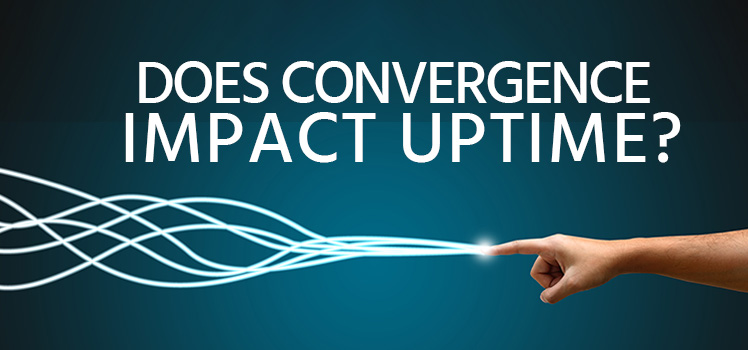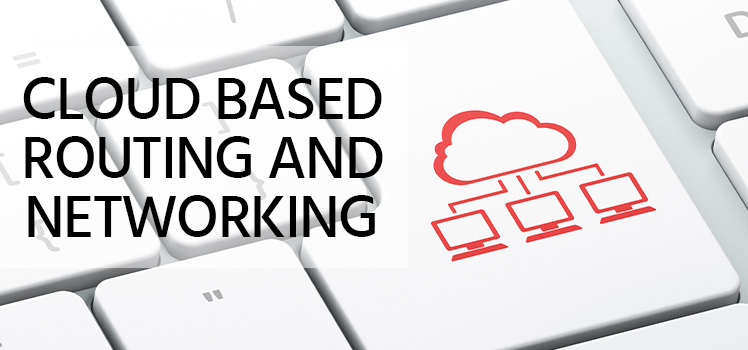Does the Cloud have a Layer 1 or Layer 2?
Your customer calls the hotline and reports an outage. Now what? Well, first we need more information. What’s down? When did it go down? Were there any changes that may have affected it? Have other customers reported outages that may be related? We can’t possibly cover all the issues here. So let’s consider a specific situation and narrow the terms.
Access, Routing, or Backbone?
It’s 1993. We are in one of the international alliances of telecommunications companies that formed following the breakup of Ma Bell. The network operations center is divided into three departments. One group handles backbone issues and deals with SDH or SONET issues at Layer 1 of the OSI model. Usually when they have an event, it affects a large number of customers. The access group deals with Layer 2 problems, primarily having to do with the Frame Relay protocol. The third group works on routing issues at Layer 3.
Customer service takes the call. They open a ticket and send it to the routing group. Each ticket has a priority based on the Service Level Agreement (SLA) with the customer. The customer has reported that their network connection is not working, so they suspect a routing problem. Is there a router connection down somewhere?
The routing technician begins investigation. He checks the customer’s router. “Up-down,” he says to himself. “Not our issue.” So he forwards the trouble ticket to the access group.
The access technician checks the status of the circuit. He sees it down. Not only is there no traffic incrementing, but the switch software indicates that the Frame Relay protocol is down. This is a Layer 1 or Layer 2 problem. He checks the event email list and finds nothing that might be causing the outage. He calls the customer. The circuit recovers when the customer reseats a loose cable on the Frame Relay CSU/DSU. We know this was a problem with the cabling. This was a Layer 1 problem.
Port Problems
It’s 2004. You’re have some vacation time, so you’re back home visiting family. A relative has a problem with their personal computer. “I can’t connect,” she tells you. She thinks it’s the modem. On her own, she took a modem card out of an old PC, but it wouldn’t work either. She bought a new modem. She is distraught. She wants you to fix it for her. But first you do some checking.
The modem from her brother’s computer works when it is in his computer, but not in hers. You look inside her computer box and see that she has a free port. “Before we break open your new modem, let’s try something,” you tell her. You take the working modem from her brother’s computer. But this time you place it into an unused port. You connect the cable, start it up – and lo and behold you have a working internet connection. You take her original modem – the one she had given on – and place it into the working slot on the motherboard.
This was another Layer 1 problem, a bad port. You advise her to return the new modem to the store for a refund, and never to use the bad port again.
Before you head home, you are at another relative’s house. Someone from work has called and asked you to check on something. There’s a LAN cable proceeding from a small hub. The lights are blinking, but you don’t look too closely. You’ve connected the LAN cable to your laptop, and the lights are blinking on your laptop port. But you have no internet connectivity.
Another relative comes in. “You’re wasting your time,” he says. “We didn’t pay the cable bill.”
This is a Layer 2 problem. All the equipment and cabling are in place, but you have no signal. It has been turned off. Accessing your company’s network will have to wait.
Connecting through the Ether
But connectivity is ubiquitous now. Everything is going wireless. Our physical connections are invisible. They travel at various bandwidths through air interfaces.
You can go online with your mobile phone or use it as a hotspot. You can go to your local fast food joint and use their free Wi-Fi. You can go to the library. You can use a USB dongle from the mobile phone company to get online though your laptop. Of course, you will still need to keep your devices charged and your bills paid.
Since the internet has become a commodity, we rely on it more and more.
Since the internet has become a commodity, we rely on it more and more. And now that virtualization and cloud computing are becoming more prevalent, many of us are entrusting our IT services to others. We access applications that may exist on virtual machines in data centers halfway across the world. Whether as consumers or companies, we are outsourcing our technology to the experts.
And rightly so. This makes our work much simpler. We just need to get online to access what we need.
Now let’s suppose we are using our favorite app – but something goes wrong. Do we lose everything? Is our data gone? How about the server configuration that we worked so hard on?
The focus has changed in recent years from ensuring connectivity to maintaining the availability of our applications. Since these virtual machines now reside in the higher layers of the OSI model, they can be maintained through software defined networking and other cutting-edge technologies. We rely on our partners in the cloud to provide robust and redundant solutions to maintain the integrity of our virtual IT environment.
Conclusion
Layers 1 and 2 will always be with us. We still need to connect to networks with physical devices and through physical interfaces. Core equipment still has a physical footprint. Virtual devices still must exist in the minds of physical machines. But we are not so vexed with connectivity problems as we were a few years ago. In time, more of our IT infrastructure will become automated, and more of it will even become autonomous. As things get easier, will they get more reliable? Maybe we’ll just connect, sit back, and let the machines do the work. Or maybe the complexity of it all will ultimately lead to decreased levels of availability. What do you think?
 Notable Network and Cloud Outages of 2021
Notable Network and Cloud Outages of 2021  Anycast Hosting Made Easy
Anycast Hosting Made Easy  Global Server Load Balancing (GSLB)
Global Server Load Balancing (GSLB) 


